A dry Sunday morning offered a chance to clear off another of the local nature reserves that were recently added to Parks on the Air. GB-4054 Iford Meadows Nature Reserve is much prettier in Spring, but like most local nature reserves and commons, Winter sees it looking dreary and muddy. Still, the birdsong in the brambles was constant—the birds know what’s coming, and it won’t be long.
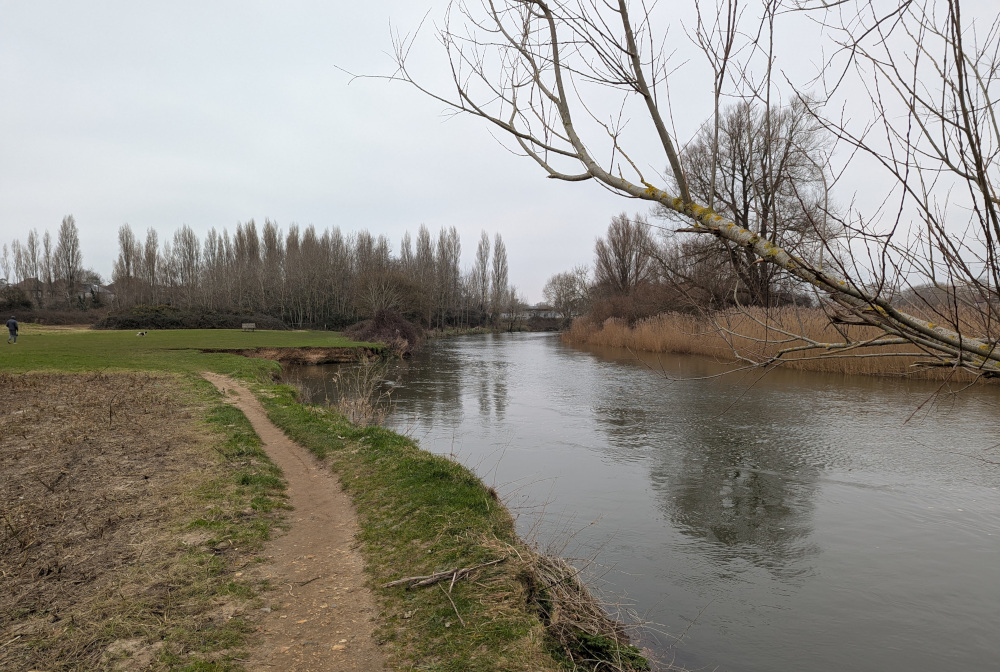 The River Stour at Iford Meadows
The River Stour at Iford Meadows
Denied a parking spot at the rugby club due to a training event, I instead parked on the roadside on Iford Lane just east of the railway bridge. I then walked across the field, through the marsh boardwalk under the railway track, then out onto the reserve itself. I spent a while wandering, looking to see what could be seen, and finding a decent spot to set up.
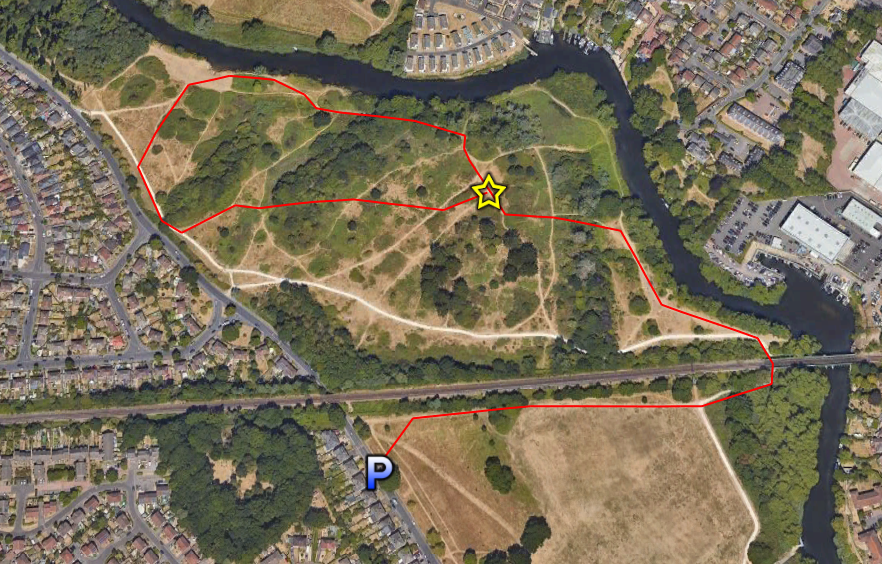 Route taken during the activation
Route taken during the activation
The central part of the site is used for cattle grazing in order to maintain the landscape. This area is still accessible across cattle grids and through gates in the fence, and this is where I chose to set up, avoiding the cow pats as much as possible. The cows largely lurked in the distance, and thankfully didn’t seem inclined to investigate what I was doing, though unfortunately the same can’t be said for a large and very friendly black Labrador which showed up at one point!
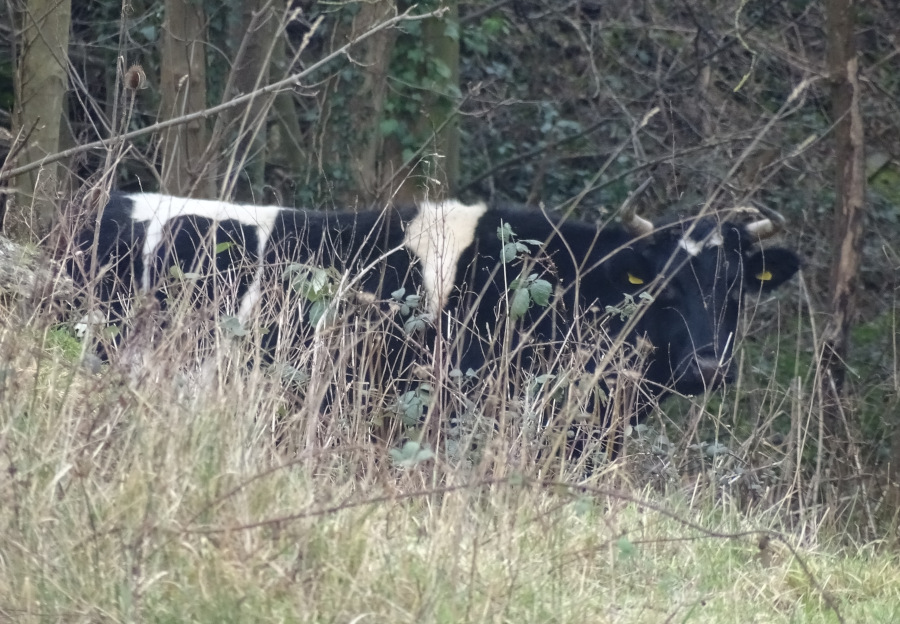 Shy but watchful.
Shy but watchful.
There are a number of wide open spaces in Iford Meadows, both naturally grassy spots and places where the brambles have been deliberately cleared. It was one of the latter that I decided to set up in eventually, using the space to bring my 40m dipole back into POTA use.
Since this got damaged at JOTA, and Battle Damage Repair subsequently enacted (superglue and gaffer tape), the dipole hasn’t seen use on my portable radio adventures. I do find it hard to put up compared to the JPC-12, particularly when activating solo, and it never seems as reliable or rugged. It also doesn’t offer access to the 10m band which I have been using as much as possible now that conditions allow for it. However, the JPC-12 doesn’t do well on 40m, and in any case being vertical it’s better for DX than for short range NVIS contacts. Apart from four QSOs at Moors Valley, I hadn’t had an SSB QSO on 40m since August, so I set out to fix that today.
In the end, the antenna went up more easily than I thought it would. Conditions were spotty on the 40m band but I made just over 30 contacts, almost all with good reports, before the base of the antenna pole decided it had had enough of its current position and made a jump to the left. This turned my inverted-V into a kind of unintentional-L configuration, with one end of the dipole largely in contact with the ground. My QSO partner at the time let me know that my previously S9 signal was now more like S3.
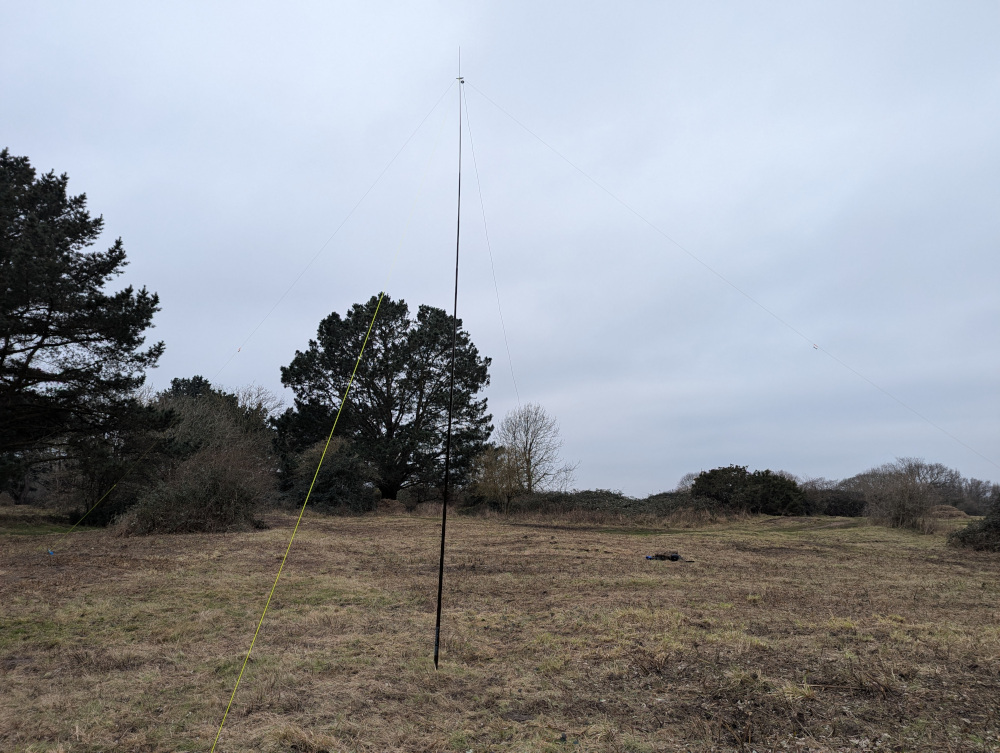 The dipole returns from the dead
The dipole returns from the dead
I was going to sort it out and get back on the air, but at that point I was getting chilly and time was ticking on, so I thought better of it and completed the pack-down job that the wind had started for me. 34 was the total for today, including Szymon M0GZP from OARC, and regular hunter John M6EAM whose QTH is close enough we could nearly have completed the QSO without the radio!
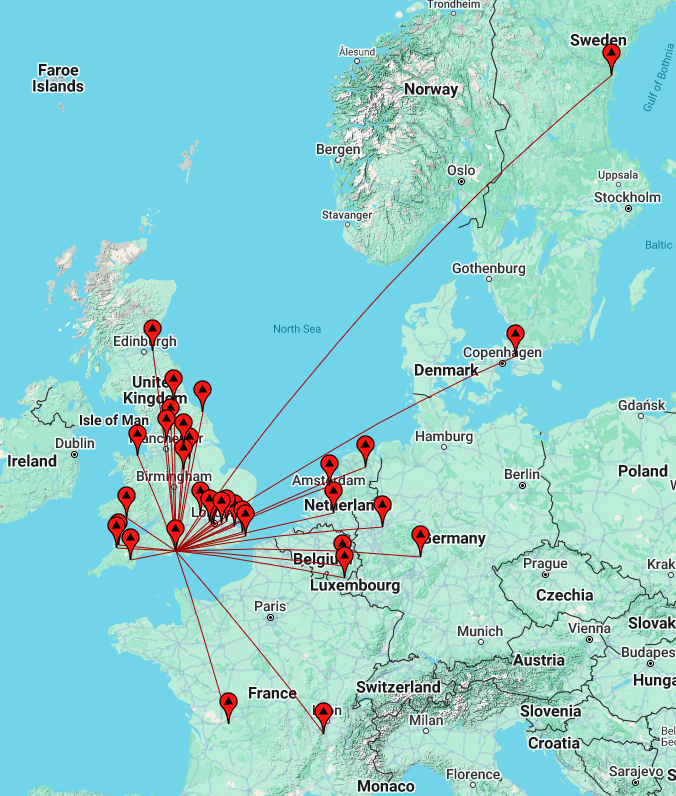 Map of contacts from the activation
Map of contacts from the activation
Many thanks to all my contacts this morning. See you on the air next time!
Comments